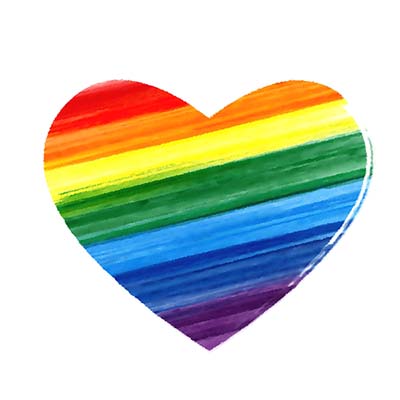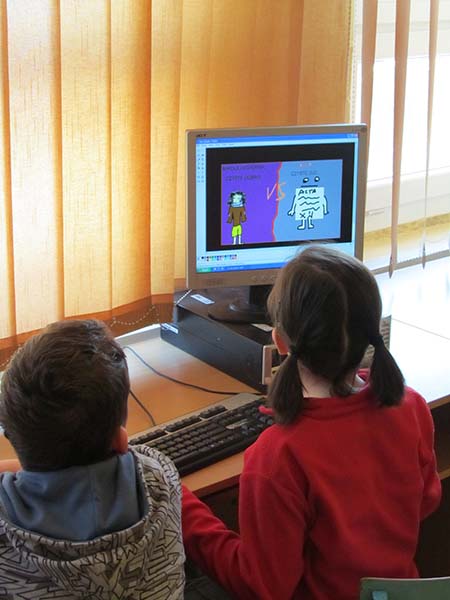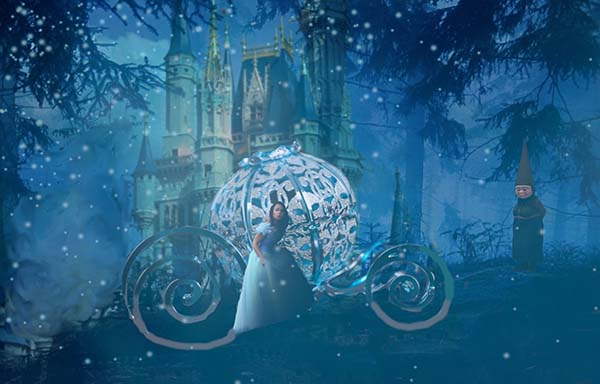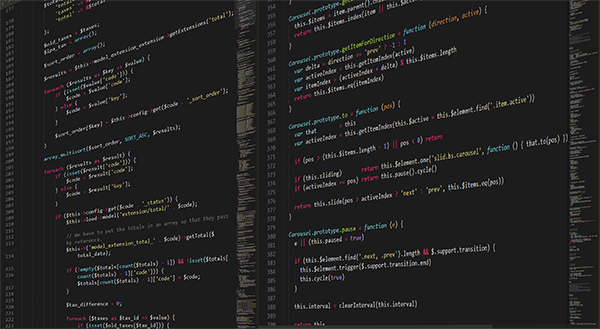by Dot Cannon

Sparking the imagination is what the annual California STEAM Symposium does best.
And on Friday, for Day Two of their ninth annual conference, that’s exactly what was happening.
Co-hosted by nonprofit Californians Dedicated to Education (CDE) Founation, along with the California Department of Education and the Commission on the Status of Women and Girls, this year’s Symposium offered keynotes, makerspace discussions and breakout sessions.
Educators from all over California, as well as other regions, logged on for this all-virtual event,
One attendee, according to CDE Foundation CEO Jessica Howard, got up at 4 am to join the conference from the Philippines!
Like Day One of the conference, Day Two started with twenty-minute “mini sessions”.
A woman’s place is…in a STEM career

“There’s a huge gender gap in the STEM fields,” said Riverside Unified School District Development Specialist Jessie Gurbada, at the start of her “Inspire Her Mind: Getting Girls into STEAM” presentation.
Women, Jessie explained, made up eight percent of the STEM workforce in the 1970s. And in 2019?
Only twenty-seven percent.
Accordingly, she said, she and colleague Christalle Hart have created the “Inspire Her Mind” program.
“Inspire Her Mind”, Jessie explained, is a two-day event, designed to “encourage, engage, excite and inspire” young women to pursue STEM careers.
In the past, the program has involved one day focusing on science,, technology, engineering and math. Participants can choose two STEAM projects to create. These can include making their own rock candy or constructing a Rube Goldberg machine.
Then, the second day focuses on personal leadership training.
Due to the pandemic, however, “Inspire Her Mind” has been virtual and asynchronous, with participants receiving a “swag bag” of resources. These, Jessie said, included maker supplies such as cornstarch, a metal straw and a can where participants could grow their own plant.
“We’re hope, hope, hoping we can do an in-person event in the spring, for the leadership and development (training),” Jessie said.
Jessie encouraged any interested attendees to contact her, regarding “Inspire Her Mind”, at this link.
And a fun mini-collaboration took place, as the session ended.
“What have you found is successful, in the swag bags?” one participant asked.
“Little plants (are popular),” Jessie answered. “(They like) the pencil, it’s all cute and purple. Little pins (and stickers).”
In the Zoom chat, one participant suggested that one of those pins might say, “This is what a scientist looks like.” Another suggested that these pins include a mirror!
A “radical”–and joyous–creative

inspiration and joyous self-acceptance were the themes of the afternoon keynote by Gabby Rivera, author of “Juliet Takes a Breath” and the Marvel Comics series, “America” .
“I’m a queer, Puerto Rican writer from the Bronx,” she began, smiling.
“…I was the first Latina to write for Marvel. And I feel like this is such a great place to share that I was raised by educators. My mom was a New York City public school kindergarten teacher for 35 years, and my grandmother was also a kindergarten and first-grade teacher.
“And so, education, and discipline, and focus, and curiosity and motivation have been such integral parts of who I am and what I do.
“…I’m really excited to be here and talk to you about radical creativity, which is just like a big, open entry point for all of us to come together. Whatever radical creativity is for you, that’s what it is, here in this space. And also, I would love to speak to you all about queer Latinx joy, which infuses pretty much everything that I do.”
Gabby said her growing-up years were turbulent.
“I definitely faced a lot of teasing and bullying for looking different, for being a tomboy I.was very afraid of what this queerness was…I grew up also in the church, so there (were) a lot of expectations, on how I was supposed to love, and how I’m supposed to look.
Realizing her own value and beauty, she said, had taken “a good portion of my life”.
“At this point in my life, queerness is definitely a superpower,” she said.
“It’s so important for queer kids, and queer kids of color, to know and to believe that they have a right to investigate who they are, who their ancestors were, and to take a lot of pride and strength there.”
A message of encouragement

Throughout her life, Gabby said, both her grandmothers, and her mother, had encouraged her to write, and share her personal truth. But, “I didn’t see a lot of LGBTQ folks succeeding.
“So, it has taken me a lot of my life to be like, ‘oh, I can live. And I’m going to live well.”
In “Juliet Takes a Breath”, she shares that message in through her gay Puerto Rican protagonist.
“I wanted to offer a very loving, open narrative to girls around the way, and kids form hoods everywhere, that you can be chubby and queer and Puerto Rican or Dominican or Nigerian, whatever it is, and love yourself, and be proud. And be curious.”
“…She’s in the library, searching for women that have been overlooked in history. So it isn’t just this book about being gay. It’s this book about being your full self, and moving in the world with wonder, and curiosity. And doing research, to reclaim your ancestors, right?”
“Juliet” would take her to unforeseen destinations.
New paths and an homage

“Penguin/Random House came along in 2019 and gave me a whole cover, and a book tour,” Gabby said.
“I never knew that was possible. I’d been selling books out of my apartment, out of the trunk of my car. And so this is one of those ‘wow’ moments.”
A graphic novel followed–and so did an offer from Marvel Comics.
“Marvel came to me,” Gabby continued. “(They) had this character named America Chavez. I had this wild oppotunity to tell a piece of her story.
“And as scared as I was, ’cause I had never written a comic before, and as much as I thought, ‘Oh my gosh, this isn’t for me,’ kind of like how I felt in science class growing up…I stepped up to the plate. ‘Cause you just gotta try. And I made some magic here that I’m so excited to share with y’all.”
Part of that magic, for Gabby, was giving her heroine opportunities. She had “America” go to college, and gave her a mentor.
“But when I was thinking about college, I was like, what education system has ever been invented for…chubby little gay me, Puerto Rican me, to succeed?,” Gabby said, laughing.
“And I couldn’t really think of one. So I made one up.”
Her creation: Sotomayor University.
“…I thought, how cool would it be to have the first Latina queer superhero go to Sotomayor University, and be welcomed by the first Supreme Court justice, Puerto Rican woman, appointed by Obama?”
Meanwhile, Gabby said, America’s mentor, Storm, is “an homage to one of my mentors, the Reverend Kelly Brown Douglas, who is a leading Black theologian and also the reverend in-house for Union Theological Seminary.
“And as we…make our magic in whatever field we’re in, we are always allowed to bring the people who have shaped us, along with us and in our work.”
Making joy a priority

Following Gabby’s presentation, California Department of Education Program Consultant Allison Frenzel interviewed her. One of the questions she asked: “How do you prioritize joy, and wade through all of the things that get in our way?”
“I am learning, and realizing, that joy is always mine, and no one can take it from me,” Gabby answered.
“The ground is seeded with our ancestors, the James Baldwins and the Audrey Lords, the Sylvia Riveras, the Celia Cruzes, right? The astronauts and all the scientists….that were doing things they weren’t supposed to do, because they were women, or because they were Black or because they were queer, right?
“So that joy is already all around us. And in moments when we cannot feel it internally, we get to reach out, and find the thing that brings it to us.
“And it is your divine right, to prioritize your joy.”
An unexpected direction

Two sets of breakout sessions followed Gabby’s opening keynote. Among the first set was the “STEAM Student Showcase”.
Lead presenter Monica Say began this session with a question.
“Has there been a time in your life when someone offered you a helping hand–and what did that lead to?” she asked.
Then, Monica shared the story of a “helping hand” that had taken her somewhere she’d never imagined. Today, she is the creator of Code With Nano, where she offers one-on-one online coding courses for kids. As she spoke, she shared an illustrated book she had created–by coding.
Monica told the audience she’d been born in Guatemala, and her parents had come to the U.S. to give her better educational opportunities. In 2013, she said, she was accepted into Cal Poly Pomona, where she majored in computer science.
Her academic journey, however, had a bumpy start.
“I was lost the whole time, ” Monica said of her first coding class.
“I was one of three girls in my computer science class,” she continued. “Even though I finished, passing that first class, I ended up with tears in my eyes because I did not want to continue majoring in computer science.”
But when she told her parents she wanted to switch majors, they told her to stay in computer science and ask for help. That would be a common theme with everyone else she asked, as well.
Monica listened to their advice.
“The last person I went (to) for help and advice, (said), ‘Hey, Monica, I have an idea. There’s a conference happening…in Mountain View, that’s an all-female confereence. You should totally check it out and see if you like it. And if you don’t like it, at the end, it’s not meant to be.'”
Monica and her mother drove for eight hours to attend the conference.
“…It was life-changing,,” she said. “…I met other girls who were feeling the same way,…and during this conference I actually met my mentor.”
Unexpected twists
What Monica’s new mentor told her: “If you combine what you love doing, with coding, you can create amazing things. And you will never be bored of coding.”
Inspired, Monica returned to Cal Poly Pomona with fresh enthusiasm, ready to take on more coding classes. All went well until her third year–when her parents lost their jobs.
“We (couldn’t) afford to pay for spring quarter,” Monica said. At that time, she began planning to get a job and save money to return to college.
“None of that happened,” she continued.
Instead, an email arrived, from Admissions, to the effect that their records indicated that she hadn’t registered. The email continued, “we miss you, and we would like to see you enrolled,” including an email for any questions.
Monica didn’t reply to the email. Then, a second one arrived–followed by a third.
“The third time I got it, I decided to reply,” Monica said. “I got all my classes for Spring, I was on track for finishing my degree and (I was hired) for a summer camp.
She had never worked with kids, or taught. All she knew was coding.
“And that’s where Nano was born. Nano is my camp name.”
The camp experience showed her “something I didn’t know I had”–a talent for teaching kids coding.
At the end of summer, Monica returned to college for her final semesters. She had two math classes left and had applied for graduation, with grad school in her sights.
But after Graduation Day came an unwelcome surprise.
Persevering

“Two weeks after graduation, I get an email, telling me that I did not pass those two math classes,” Monica said.
“And that’s when everything for me was ruined…I had to go back in the fall and take these two math classes again.”
Frustrated, she gave up. “I felt like I disappointed so many people…(my parents, and) that one person that gave me the helping hand when I needed it the most.””
But that one person would send her an email.
“And she told me, ‘Monica, you cannot give up. You are two classes away from finishing your degree. You cannot let everything go.'”
Monica said her reaction was, “Everyone around me keeps believing in me, and seeing something in me that I don’t see in myself. ” Acting on that belief, she returned to college, completing those two math classes and earning her computer science degree.
“All the struggles, all the obstacles I went through, made me come out stronger, and made me start something called Code With Nano,” Monica said.
Code With Nano, she explained, was geared towards giving everyone access to coding, and exposing kids to coding at a young age.
“All of our classes are one-on-one, we use easy platforms that kids use today to play…to teach them about coding, and learn.
“By planting (that seed),, we are planting that seed (to) blossom into our next creators, our next innovators.
“We just celebrated our first year, two months ago.”
Two new mentees

Monica wrapped up her presentation by introducing two of her students–nine-year-old Emma and eleven-year old Ethan.
“I’ve created some classic games, like Space Invaders, but instead I’ve named it Space Turtles,” said Ethan. He said he’d created his game using Javascript.
Emma, meanwhile, had created “lots of different things and fun things in Minecraft”. Those included pandas, polar bears, and turtles.
In addition, Emma and Ethan had recently competed in their first coding competition together.
“Ethan built a volcano and I built a rainbow,” Emma said. “…And we actually won first place.”
When Monica asked her young students what they wanted to be when they grew up, Ethan said he wanted to be “a computer engineer who builds robots and spaceships”.
“I don’t know what I want to be yet, but I know I want to be something with coding, at least,” Emma said.
Reimagining “Cinderella” with STEAM

One of Day Two’s final afternoon sessions was entitled, “Enchanted STEAM: Saving Cinderella”.
And it was an intriguing concept.
Presenters Shanon Albertson and Dr. Sherry Mohazab introduced themselves as co-teachers, in second grade at Playa Vista Elementary School, as well as at Loyola Marymount University.
Their second-grade lessons were the subject of their presentation.
Dr. Mohazab described putting together learning units for virtual learning, where students would understand that different cultures have the same stories.
“We wanted them to be able to compare and contrast the similar stories,” she said, “and to be able to identify what a problem is, and understand the elements of a fairy tale, and build an alternative solution that would maybe save Cinderella.”
“All of our lessons have what we call a choice board,” said Shanon, displaying a slide. “And the choices are broken down by color. So that the kids know, whenever they get to a choice board, there are specific things that they have to do.
“They have to choose from the orange boxes, they have to choose from the blue boxes and then they have to choose one from the pink boxes.
“…And this gives them a choice on how they’re going to present their information, or how they’re going to research and learn.”
For example, Shanon said, the blue boxes allowed students different choices to write up their information: Kidblog, their journal or class dojo. The pink boxes, meanwhile, were the engineering or art boxes. Students could choose to create something with 3D printing, LEGO bricks or materials from the engineering cart.
Analysis and problem-solving

“The very first thing that we’re going to do, we’re going to have them watch or listen…(to the Cinderella story) that we all know,” said Dr. Mohazab.
“Then, we give them choices again. We have two pages’ worth of different versions of Cinderella from a whole bunch of different cultures.”
The students’ task then, she said, was to read or listen to two different versions of the story. The following day, students use their writing skills, comparing the versions they’ve read or heard.
Dr. Mohazab said the next day involved problem-solving.
“We are a STEM school, so we always have an engineering challenge in all of our units,” she said.
In the case of Cinderella? “Our particular task for the students was to design a device that would help her clean more efficiently.”
And the students’ imaginations took flight.
Among the devices they created: a vacuum on a skateboard which can sweep and fold laundry at the same time, a three-in-one mop, broom and vacuum, and a robot that takes over the cleaning chores! After creating the prototype, students draw a picture of Cinderella using their creations.
The final task in the unit, Shanon said, was for the students to write their own fairy tale.
“They used Fanschool to publish their stories,” she said. “It’s a really easy program and kids love it because not only can they blog about whatever they want…but they can give each other comments and it’s kind of like their own little classroom Facebook.
“When I introduced it, my students kind of just ran away with writing. And they got better and better, and were writing more and more.”

